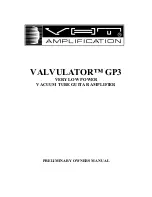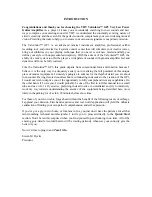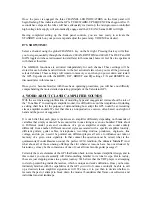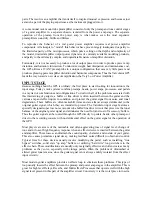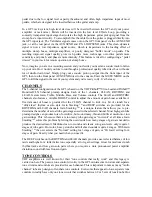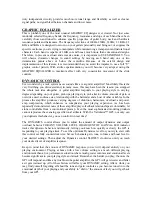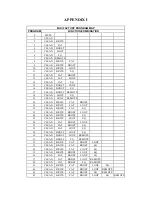
parts. The result is an amplifier that lends itself to inspired musical expression and becomes just
as much a part of the playing experience as the instrument plugged into it.
A conventional rack mount tube preamplifier consists of only the preamp and tone control stages
of a guitar amplifier in a separate chassis, isolated from the power amp stage. The separate
operation of the preamp from the power amp is what makes even the most expensive
preamplifiers sound dry, brittle and lifeless.
To reproduce the behavior of a real guitar power amplifier requires real power amplif ier
components. All attempts to “model” this behavior have proven largely inadequate due partly to
the limited capacity of the microprocessor, which puts a ceiling on the depth and complexity of
the model, limited amplifier output power dynamics of currently available modeling products,
and partly to the extremely complex and unpredictable nature of amplifier distortion.
Fortunately, it is not necessary to produce a lot of output power in order to produce power amp
distortion and harmonic interaction. To minimize weight, heat dissipation, and maintenance cost,
the GP3 utilizes a 12AX7 preamp tube in a unique configuration that uses very little power and
produces pleasing power amplifier distortion and harmonic components. Thus the Valvulator GP3
leads the way toward a new class of amplification, the Very Low Power Amplifier.
INPUT STAGE
B
ecause nothing about the GP3 is ordinary, the first place to start looking for innovation is the
input stage. Today’s rack systems combine preamps, heads, power amps, processors, and pedals
in a myriad of combinations and configurations. To deal with all of the problems associated with
this intermixing of gadgets, a buffer or line driver is often inserted between the guitar and the
various amp and effect inputs to condition and protect the guitar signal from noise and tonal
degradation. These buffers are often makeshift items and are almost always detrimental to the
original guitar signal, which they are intended to protect. The Valvulator input stage features a
specially designed super low noise vacuum tube buffer/line driver circuit that preserves the tonal
balance of the original guitar signal and eliminates the need for (and cost of) accessory buffers.
Thus the guitar signal can be routed through the GP3 directly to pedals, heads, other preamps or
direct to the recording console with no detrimental effect on the guitar signal or the operation of
the GP3!
Most players are aware of the noticeable and often aggravating loss of signal level, change of
tone and/or loss of high frequency response when an effects device is inserted between the guitar
and amplifier. These losses can diminish the sound quality, character, and sustain of your guitar.
This also causes premature signal decay, making feedback notes difficult to obtain and control.
Typical fixes for these devices usually involve modifying the pedal, such as installing “true
bypass” switches, solid state “op amp” buffers, or utilizing “hard wire” loop switchers in the
effects chain. These modifications are usually only marginally effective and often create as many
problems as they solve, especially with vintage pedals. Often the problem of diminished or
altered guitar tone remains, since the guitar signal is not always entirely isolated from the effect
input circuitry.
Most modern guitar amplifiers provide an effects loop to eliminate these problems. This type of
loop usually inserts the effect between the preamp and power amp stages in the amplifier. This is
great for high level Delays, Reverbs, and Multi-effects Processors that operate well with the high
signal level present in this part of the amplifier circuit. Conversely it is the worst place to insert a

